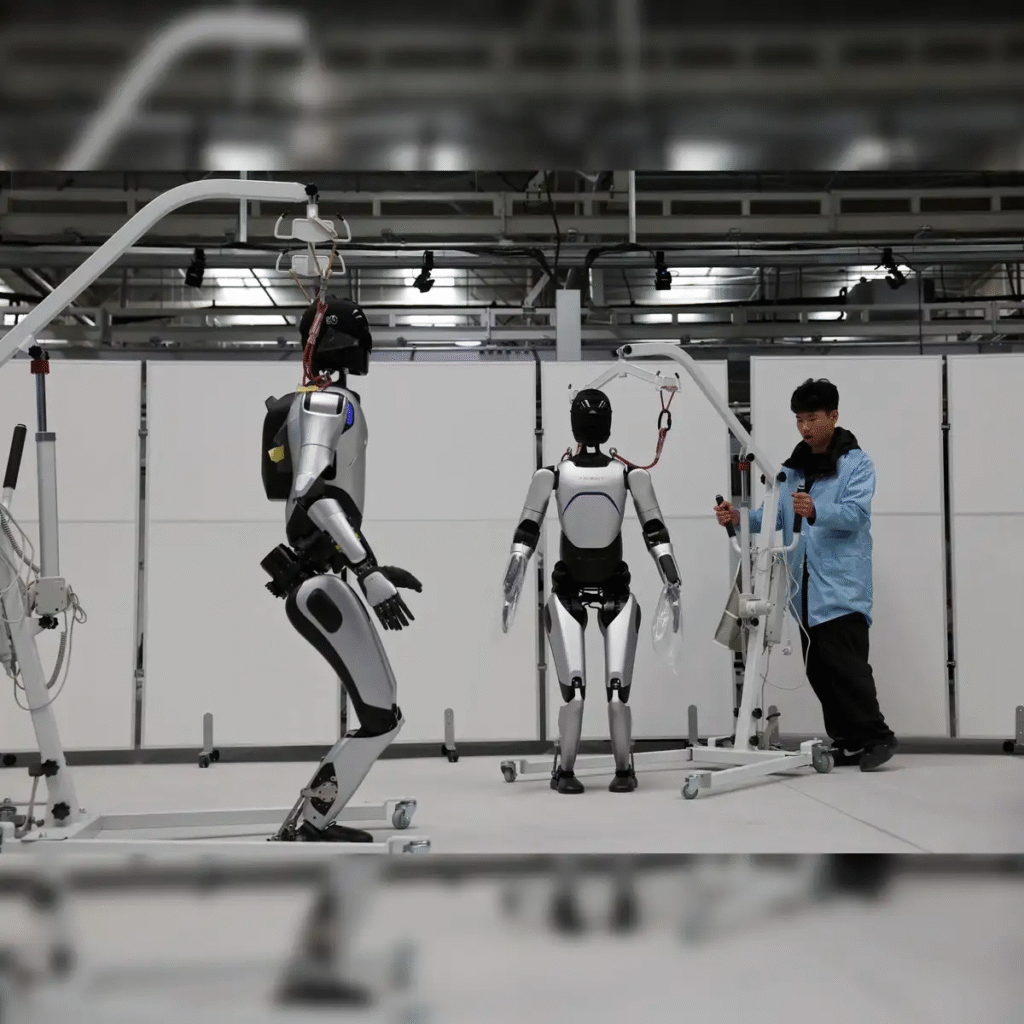China Unveils AI Humanoid Robots to Revolutionize Manufacturing ,In a vast warehouse on the outskirts of Shanghai, rows of humanoid robots perform repetitive tasks such as folding clothes, making sandwiches, and opening doors. These robots, operated for up to 17 hours a day, are part of a major initiative by Chinese startup AgiBot. The goal is to generate massive amounts of data to train AI-powered robots that could soon become common in homes and factories.
AgiBot partner Yao Maoqing envisions a future where their humanoid robots not only assemble electronics but also build more robots. “Imagine a robot factory where machines assemble themselves,” he said.
President Xi Endorses Innovation as China’s AI Humanoid Robots
The significance of this technology to China’s long-term economic strategy was reinforced when President Xi Jinping personally visited AgiBot’s facility last month. During the visit, Xi joked that one day these robots might even form a football team. He also met with other robotics innovators like Unitree earlier this year, encouraging private enterprises to contribute to China’s economic momentum.

AI Breakthroughs Make Humanoids Smarter as China Unveils AI Humanoid Robots
Thanks to advancements in artificial intelligence, China is combining powerful robot hardware with increasingly sophisticated software. Companies like DeepSeek are playing a critical role in powering these machines with next-gen AI “brains.” Insiders from the industry told Reuters that China is leveraging its strengths in data training and AI development to create humanoid robots that learn tasks on their own and adapt to real-world factory conditions.
China Made AI Humanoid Robots Amid Push for Global Manufacturing Edge
Amid rising tensions with the U.S. over trade and tariffs, China is fast-tracking its next industrial revolution. As the U.S. tries to revive domestic manufacturing jobs, China is looking to humanoid robots to maintain its leadership in global production. Authorities have committed over $20 billion in subsidies for AI and robotics startups, and a ¥1 trillion fund (~$137 billion) is in the works to fuel innovation in emerging technologies.
While there’s optimism about productivity and global competitiveness, the transition raises concerns about employment. However, state media suggests that, like past technological revolutions, new job opportunities will eventually outweigh any initial disruptions.










